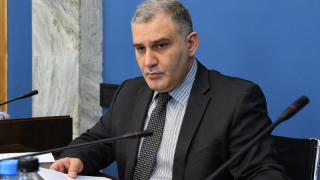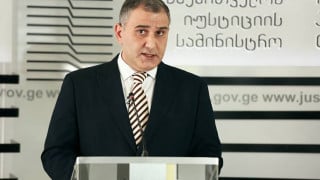Mikheil Sarjveladze: “The value of agricultural produce in Georgia was GEL 3.5 billion in 2012 and it has already surpassed GEL 7 billion.”
Verdict: FactCheck concludes that Mikheil Sarjveladze’s statement is HALF TRUE.
Resume: In 2021, the total output of agricultural produce amounted to GEL 7.3 billion in current prices which is GEL 971 million (15.4%) more as compared to 2020’s figure (GEL 6.3 billion) and GEL 3.2 billion more (80.3%) as compared to 2012’s figure (GEL 4.4 billion). The data show that the growth in current prices is indeed impressive. The figures in the statement are almost in line with the reality, although this is not relevant data for measuring progress in the agricultural field and the use of nominal indicators to make an analysis over time is a manipulation.
In order to assess progress in agricultural, it is more appropriate to analyse its real growth rate (how the sector’s output changed excluding the inflation effect), on the one hand, and understand the share of agriculture in Georgia’s total economy (or what portion it occupies in the gross domestic product), on the other hand. In fact, the real figure in 2021 is nearly 34% more as compared to 2012 instead of 100% (being doubled). At the same time, of note Is that the agricultural sector achieved this growth owing to nearly GEL 2 billion having been spent for agricultural development since 2013.
In regard to the second indicator – the share of agriculture in the total gross domestic product, growth in 2013-2014 was followed by a decline in 2015-2017. There is no clear-cut trend for the subsequent years and the agriculture to the GDP ratio is fluctuating. According to the preliminary data of 2022, the agriculture to the GDP ratio contracted again to 7% (two percentage points less as compared to 2012) which proves that other fields of the economy are growing at a faster rate as compared to agriculture.
Given the aforementioned, this indicator is not relevant for measuring agriculture progress even though the figures in the statement are nearly all accurate. Moreover, it exaggerates the scale of progress whilst also completely ignoring the fact that agriculture is growing at a lower rate as compared to other fields. Therefore, FactCheck concludes that Mikheil Sarjveladze’s statement is HALF TRUE.
Analysis
Georgian Dream MP, Mikheil Sarjveladze, talked about agriculture on air on PosTV and stated: “Until 2012, the total value of agricultural produce in Georgia, its entire amount starting from the family, was GEL 3.5 billion. It has now surpassed GEL 7 billion. This indicator was true two years ago and since it is growing, now we would be past GEL 8 billion already.”
In 2021, the total output of agricultural produce amounted to GEL 7.3 billion in current prices which is GEL 971 million (15.4%) more as compared to 2020’s figure (GEL 6.3 billion) and GEL 3.2 billion more (80.3%) as compared to 2012’s figure (GEL 4.4 billion). In his statement, Mikheil Sarjveladze is possibly referring to data for 2012 and 2021, although he somewhat incorrectly names the figures – it was GEL 4.04 billion instead of GEL 3.5 billion in 2021 as claimed by Mr Sarjveladze. However, if take agricultural produce output, it was GEL 3.3 billion in current prices in 2011 as reported by the National Statistics Office of Georgia. In 2012, the same figure was GEL 3.1 billion whilst the latest available figure for agricultural output was GEL 5.7 billion in current prices in 2021. These figures also do not match those provided by the MP.
However, we will not focus on these figures because they are not relevant data for measuring progress in agriculture and the use of nominal indicators for analysis over time is manipulative.
In order to assess progress in agricultural, it is more appropriate to analyse its real growth rate (how the sector output changed excluding the inflation effect), on the one hand, and understand the share of agriculture in Georgia’s total economy (or what portion it occupies in the gross domestic product), on the other hand.
According to the National Statistics Office of Georgia, the real agriculture growth rate in 2021 was 1.5% which means that agricultural output did not increase significantly as compared to the previous year. In regard to the statistics of the last few years, real agriculture growth was 9% in 2011 whilst it shrank by 5% in 2012. The largest agriculture growth figures were registered in 2013 and 2018 when real growth reached 13.3% and 13.8%, respectively. In 2014, 2015, 2016 and 2017, agriculture continued to decrease and the highest growth rate was registered in 2018. The agriculture growth trend continued well into 2019, 2020 and 2021.
Table 1: Total Agricultural Output (Current Prices), Real Growth and Share in the GDP

Source: National Statistics Office of Georgia
In regard to the agriculture to the GDP ratio, it grew in 2013 but there was a trend of decline in 2015-2017. It grew again in 2018, followed by a contraction in 2019 and growth in 2020. The agriculture to the GDP ratio decreased again according to the preliminary data for 2021. The agriculture to the GDP ratio was 9.2% in 2012. Although agriculture has been proclaimed as a priority by the Georgian authorities and its funding has been increased substantially since 2012, the decrease in the agriculture to the GDP ratio means that agriculture has a limited effect on Georgia’s economic growth.
Of additional note is that some 230,300 people were employed in the fields of agriculture, forestry and fishery in 2021 which amounted to 18.9% of the total number of employed people in Georgia.
It is also noteworthy that nearly GEL 2 billion has been spent on the development of agriculture in the past few years and the average agriculture growth rate has been 2%. The surge in agriculture funding started in 2012 when its share in total payables amounted to 2.9% (it was 1.1% in 2011). Agricultural growth increased in 2013, 2018, 2019, 2020 and 2021 under increased funding as compared to other years when it contracted.
Given the aforementioned, these data are not relevant for measuring progress in agriculture even though the figures in the statement are almost fully accurate. Therefore, FactCheck concludes that Mikheil Sarjveladze’s statement is HALF TRUE.








